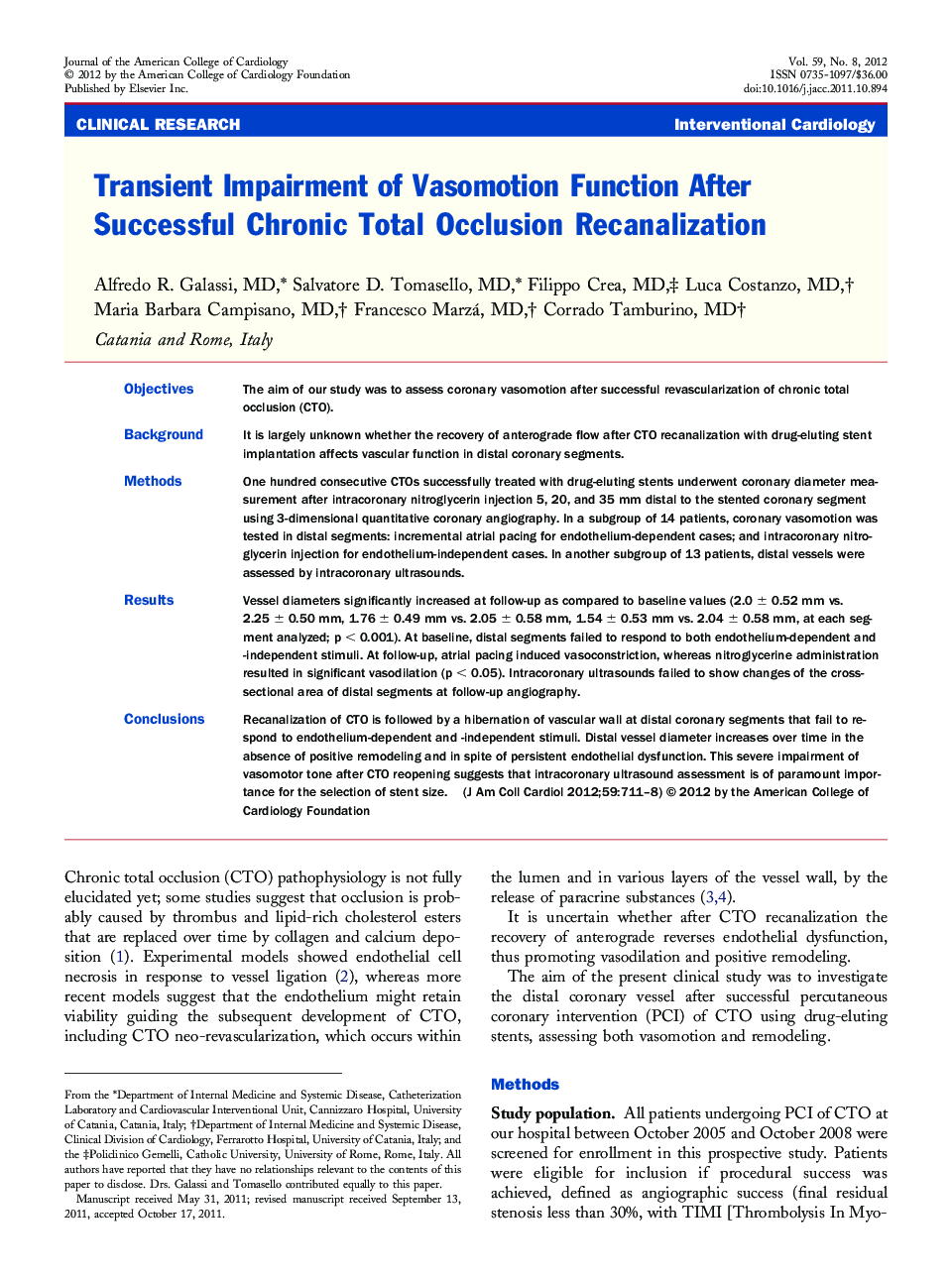| Article ID | Journal | Published Year | Pages | File Type |
|---|---|---|---|---|
| 2947819 | Journal of the American College of Cardiology | 2012 | 8 Pages |
ObjectivesThe aim of our study was to assess coronary vasomotion after successful revascularization of chronic total occlusion (CTO).BackgroundIt is largely unknown whether the recovery of anterograde flow after CTO recanalization with drug-eluting stent implantation affects vascular function in distal coronary segments.MethodsOne hundred consecutive CTOs successfully treated with drug-eluting stents underwent coronary diameter measurement after intracoronary nitroglycerin injection 5, 20, and 35 mm distal to the stented coronary segment using 3-dimensional quantitative coronary angiography. In a subgroup of 14 patients, coronary vasomotion was tested in distal segments: incremental atrial pacing for endothelium-dependent cases; and intracoronary nitroglycerin injection for endothelium-independent cases. In another subgroup of 13 patients, distal vessels were assessed by intracoronary ultrasounds.ResultsVessel diameters significantly increased at follow-up as compared to baseline values (2.0 ± 0.52 mm vs. 2.25 ± 0.50 mm, 1.76 ± 0.49 mm vs. 2.05 ± 0.58 mm, 1.54 ± 0.53 mm vs. 2.04 ± 0.58 mm, at each segment analyzed; p < 0.001). At baseline, distal segments failed to respond to both endothelium-dependent and -independent stimuli. At follow-up, atrial pacing induced vasoconstriction, whereas nitroglycerine administration resulted in significant vasodilation (p < 0.05). Intracoronary ultrasounds failed to show changes of the cross-sectional area of distal segments at follow-up angiography.ConclusionsRecanalization of CTO is followed by a hibernation of vascular wall at distal coronary segments that fail to respond to endothelium-dependent and -independent stimuli. Distal vessel diameter increases over time in the absence of positive remodeling and in spite of persistent endothelial dysfunction. This severe impairment of vasomotor tone after CTO reopening suggests that intracoronary ultrasound assessment is of paramount importance for the selection of stent size.
